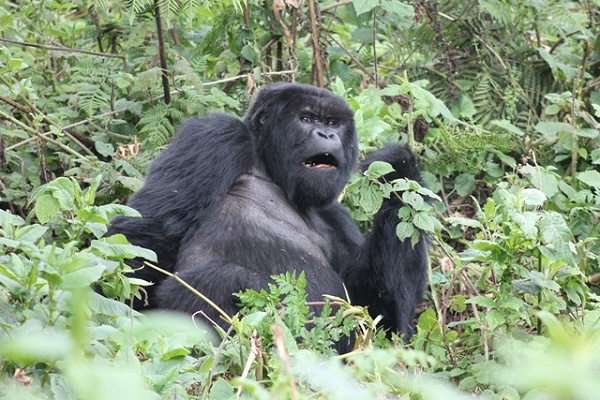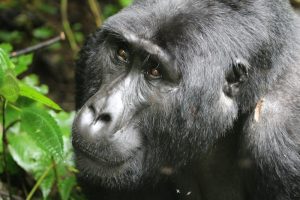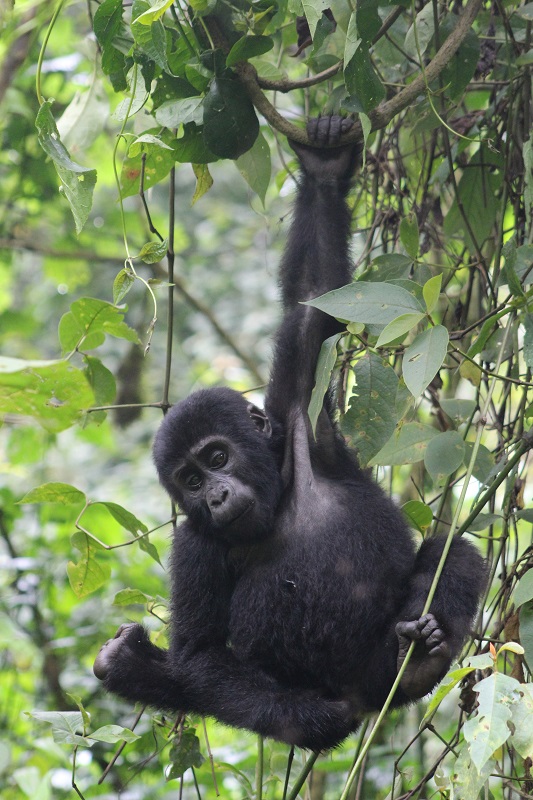
Gorillas have recently been put on a new list of “Big Five” animals in the world, which is a list of five animals that have been found to be very pivotal to conservation and also provide amazing wildlife adventures and photography. Therefore, seeing gorillas in their environment should be high on the bucket list of every wildlife lover and conservation-minded traveler. It is a life changing experience coming face to face with the massive silverback gorilla, so strong yet so gentle, leading his family of gorillas in the lush forest.
Did you know gorillas are endemic to Africa?
Outside the zoos, gorillas can only be found in jungles in Africa. The gorillas in Africa are divided into two species, the western gorilla and the eastern gorilla.
The western gorilla species which has the bigger population of gorillas in Africa (than the eastern gorilla) with more than 100,000 gorillas thought to live in mid-western Africa. The western gorilla is further divided into two species, the western lowland gorilla and the cross-river gorilla. The western lowland gorilla subspecies makes up most of this gorilla species and is spread across the countries of Angola, Cameroon, Central African Republic, Democratic Republic of Congo, Equatorial Guinea, and Gabon. While, the cross-river gorillas are quite rare with few individuals left whose number is roughly 300 and confined on the border region of Cameroon – Nigeria.
The eastern gorilla species is geographically isolated away towards eastern Africa. The eastern gorilla has a much smaller population of about 1000 gorillas and found in countries of Rwanda, Uganda, and the Democratic Republic of Congo. The eastern gorilla is also divided into two sub-species, the more popular and numerous mountain gorilla that is found in all the three countries and the eastern lowland gorilla that is limited to the D.R. Congo.
The best places to see gorillas in Africa on a safari vacation
Planning a vacation and want to know the best places to see gorillas in Africa?
Much as western Africa has the biggest population of gorillas in Africa (western gorillas) there has not been much effort put into gorilla tourism, as compared to eastern Africa where gorilla tourism is highly developed and gorilla trekking is one of the popular tours here.
The following places in Africa provide the opportunity to visit the gorillas in their environment and see them up-close
Volcanoes national park in Rwanda
The best place to see gorillas in Africa is potentially in Rwanda in the Volcanoes National Park. The park is home to the mountain gorillas (a subspecies of the eastern gorilla) which number around 400 individuals which live across the chain of 5 lush volcanic cones that make up part of the Virunga mountains that are shared with Uganda and the Democratic Republic of Congo.
The Volcanoes National Park is easy to access from Kigali the capital city and the airport by a 2.5 hour drive on a nice paved road through the beautiful hilly landscape of Rwanda. You can therefore travel to the park, trek to the gorillas and return for your evening flight out of Rwanda all in one day.
Many gorillas to see, easy access, and safety make this possibly the best place to see gorillas in Africa
The Rwanda gorilla trekking permit is quite pricey costing up to $1500 for international visitors.
Bwindi impenetrable national park Uganda
If you want the bonus of exploring a true Africa jungle, go deeper into the forest and have just you and the gorillas, Bwindi Impenetrable Forest National Park in Uganda is perhaps the best place for you to see the gorillas in Africa. Bwindi Forest National Park in Uganda has the biggest number of mountain gorillas of all the places where mountain gorillas live. The park is suitably named impenetrable due to the dense forest that is difficult to penetrate but a park guide with a machete will create the trail for you during the gorilla trek in Bwindi Impenetrable National Park.
Bwindi Impenetrable National Park has 22 habituated gorilla families available for tracking which gives visitors a wide range of groups for visitors to choose from
Mgahinga Gorilla National park in Uganda
Mgahinga National Park is another place to see gorillas in Uganda. The park is made up of the part of the Virunga mountains that is shared with Uganda. Mgahinga National Park is perhaps the last place to be considered for the gorilla trek in Uganda because it has just one habituated gorilla group. On the other hand if you cannot afford the expensive gorilla permit in Rwanda (1500) but want a gorilla experience that is similar but cheaper, Mgahinga National park is the place to visit (the gorilla permit costs $700)
Virunga National Park in D.R. Congo
Virunga National Park in Congo makes up the other part of the Virunga mountains after the parts in Rwanda (Volcanoes NP) and Uganda (Mgahinga N.P). Virunga national park was one of the best places to see gorillas in Africa because of the cheap gorilla ticket and amazing landscape of the lush volcanic cones. However, in addition to keeping gorillas, the park provided a hiding place for rebels and criminals and is therefore constantly an area of conflict in the DRC. Until declared free of any insurgency, it is no longer safe to visit the gorillas in the Virunga national park
Senkwekwe Mountain Gorilla sanctuary in the D.R. Congo
The only sanctuary of orphaned mountain gorillas in the world is the Senkwekwe center in the Virunga National Park. The facility is located at the Virunga National Park headquarters in Rumangabo. The orphaned mountain gorillas have been rescued from conflict zones and poachers snares.
The center offers visitors a rare chance to see the gorillas up-close and learn more about them.
Kahuz-biega National Park in the Democratic Republic of Congo
Kahuzi biega is another place in the Democratic Republic of Congo with gorillas. However, unlike the Virunga mountains and Bwindi forest above that have mountain gorillas, Kahuzi biega has the eastern lowland gorillas (also called grauers gorillas), a subspecies of the eastern gorillas that includes the mountain gorillas too. The eastern lowland gorillas are found only in the D.R. Congo. Kahuzi Biega is located in the more safer area of eastern Congo and is one of the places you can visit to see the gorillas.
The park is also located near the southern border with Rwanda which is the perfect base to visit these gorillas. A lot of visitors like to combine the visit to mountain gorillas in Rwanda’s volcanoes national park, with the visit to the lowland gorillas in the Kahuzi-Biega National Park in the Congo.
Other places to see gorillas (western Africa)
Dzanga-Ndoki National Park (Central African Republic)
Dzanga-Ndoki National Park in Central African Republic is notable for its high density of western lowland gorillas, said to be one of the highest in the world, hence one of the best places one can go to see gorillas in Africa. Gorilla trekking in the park has been introduced after successfully habituating one gorilla family.
Odzala-Kokoua National Park (Congo Brazzaville)
Odzala-Kokoua National Park in the Republic of Congo or Congo Brazzaville has a whopping 22,000 western lowland gorillas, and of this population two groups have been habituated for the gorilla tracking experience. Even without going on the gorilla tracking experience, the sheer number of gorillas provides high chances of stumbling into a gorilla while on walk in the forest. This is arguably the best place to see western lowland gorillas in Africa.
The park is also run by the able African Parks organization that has done so well with a number of parks across Africa, include the Akagera National Park in Rwanda.
Gabon
Gabon has one of the biggest populations of gorillas in Africa that are found in several of the 12 parks here such as in the Moukalaba-Doudou National Park, Lope National Park, and Loango National Park, but there has not been any success with gorilla habituation to allow effective tours to see the gorillas in the forests. You may see the gorillas while on safari in the park but the sightings will most likely be sporadic and random.
Equatorial Guinea
Equatorial Guinea’s largest park Monte Alen National Park is a stronghold for the western lowland gorillas but there is no serious gorilla tourism taking place in the park. There has yet to be a habituated gorilla group for tracking. But a guided nature walk in the company of the locals can lead you to the gorilla territory and you may be able to see gorillas.
Angola
Angola has a thriving western lowland gorilla population in north of the country in the Cabinda enclave near River Congo. However there is no organized gorilla tourism and therefore not a reliable place for one to see gorillas in Africa.
Nigeria (Cross River)
Nigeria has the rare cross-river gorillas however there has not been any effort to develop gorilla tourism and therefore there is no clear opportunity to see the gorillas here.
Cameroon (Cross River)
Cameroon shares the rare cross-river gorilla population with Nigeria along the two countries’ borders but there is no gorilla tourism here so this is the last place to think if one wants to see gorillas in Africa.
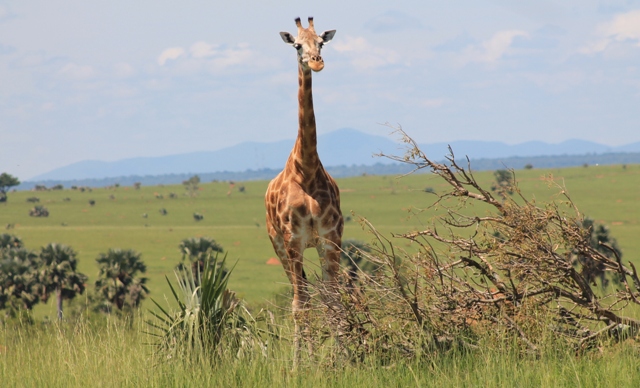
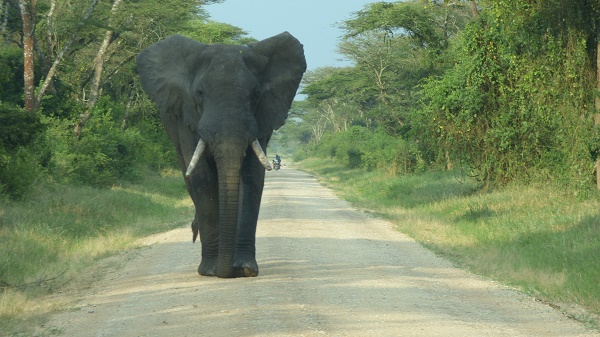
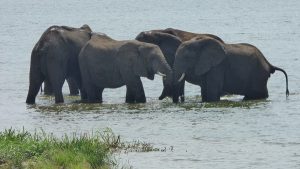
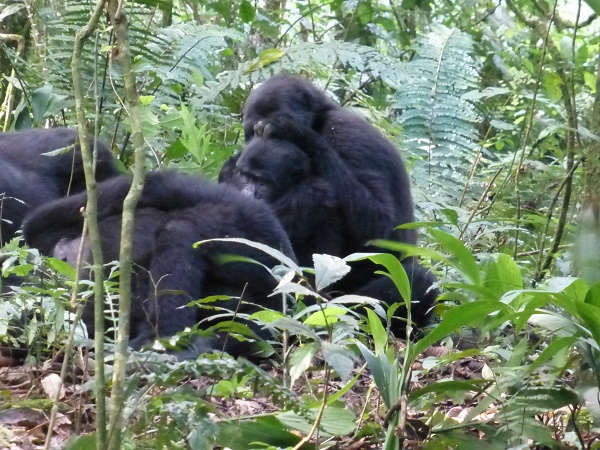 Mating and reproduction in
Mating and reproduction in 